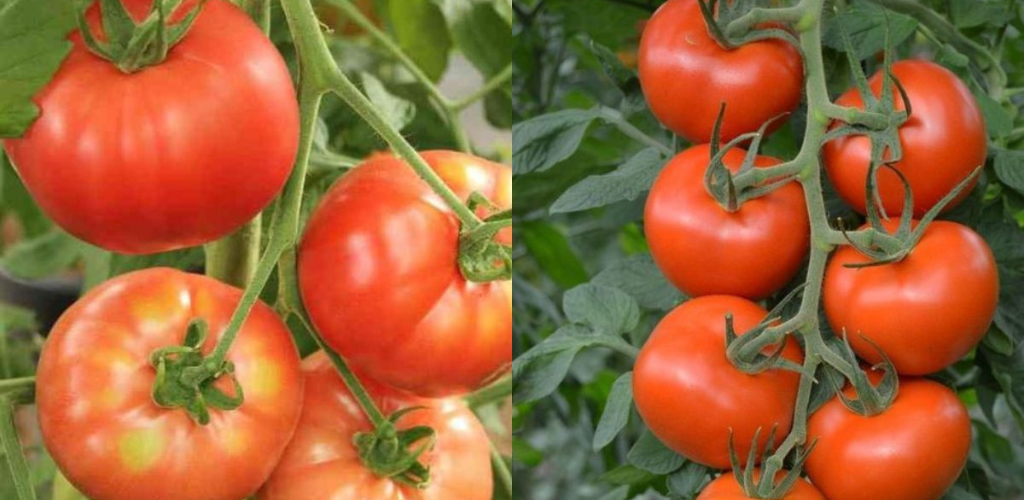13 Tips for Growing Unlimited Tomatoes
If you are lucky enough to have a vegetable garden or some free space to grow beautiful things, it is a safe bet that tomatoes will be among the most prized and cherished shoots by the whole family.
Indeed, few people turn their noses up at this fresh food that can be used in so many ways, both raw and cooked. But to be able to vary the pleasures, the gardener must start by succeeding in growing tomatoes in good conditions. If you want to grow large, tasty tomatoes in greater numbers, take note of these few tips that will make the difference and give you some keys to successful cultivation.
For better growth of seedlings and tomatoes that thrive well in the ground or in pots, (re)discover our ideas for the most effective, economical and natural fertilizers for tomatoes. The seeds of different varieties of tomatoes love these little additions to the soil.
1) To make the roots stronger, plant the tomato plants deeply.
By being more in the ground, the stem will create more roots which will in turn be able to draw all the water that the tomatoes need to grow. Better anchored in the ground, the plants will also be more solid against bad weather that could fall on them.
2) Cut the bottom leaves.
Growth occurs more on the top of the tomato plants where the sun shines more, thus promoting photosynthesis.
Once the plant is 60 cm tall, do not hesitate to run the pruning shears over its lower half to remove the leaves.
Some diseases start in the soil and spread through the leaves, by cutting them your plants will also be preserved.
3) Remove the suckers.
This is the special name given to these tiny stems that appear between the central stem and the main stem and which must be pinched to remove them.
Since they do not produce fruit, they are useless and deprive your tomatoes of light a little. This is not mandatory, but it is the little details that allow you to obtain tasty fruit! Do this on plants of at least 80 cm and make cuttings to produce more tomatoes.
4) Opt for mulching when growing tomatoes
This helps protect the soil, retain moisture, warm the soil and protect your plants from certain diseases, as they are less in direct contact with the soil. The root system will be healthier.
5) Copper will keep some pests away.
Slugs and snails are a threat to your tomatoes. To avoid any problems, use copper strips or pipes to prevent invasions. It is always better than chemicals and it is effective!
6) Use a stake for your tomatoes.
Staking them will prevent them from falling or tipping over by supporting them and protecting them from the harmful effects of wind. When properly upright, the stem will be less stressed and will better perform its role by effectively raising the sap and nutrients.
7) Allow space
There should be between 60 and 90 cm between each plant. Too close together, your plants will have less sun, especially in the lower part and photosynthesis will not be as good.
To have large fruits to make stuffed tomatoes as for cherry tomatoes, think about it!
8) To prevent tomatoes from cracking, water your plants sufficiently.
If they crack, it is because they lack water.
9) Against yellowing of leaves and for healthy plants, you can use Epsom salt.
This is a well-known trick among gardeners who swear by it to achieve good growth, strong stems, a longer growing season and against yellowing.
You can put some in the soil when planting by using a soil scraping tool. A tablespoon will be enough in your hole.
You can put a teaspoon of it for three liters of water to water them every two to three weeks. This will provide them with magnesium and sulfate.
10) Take care with watering to grow and harvest beautiful, fleshy tomatoes
You don’t water tomatoes just anyhow! Water from the bottom up to prevent splashing from spreading diseases.
Choose slower watering, the tomatoes should not receive torrents of water running down them all at once. By going more slowly and gently so that the penetration is deep, the water will be able to penetrate the soil well and reach all the roots.
The soil will stay moister this way and the plant will be less likely to dry out. Then check the watering by digging. You need at least 15 cm of moist soil (more is perfect). If the soil lacks moisture, continue. After a week, you will know roughly how often and how much water is needed.
11) Accompany your plants with a few marigolds or Indian pinks.
It’s not just about color! It allows nematodes to attack tomatoes and therefore deform the stems, roots and fruits.
It is often because of them that nutrients circulate poorly or that certain diseases are carried. Place them not far from the base of your tomato plants so that their smell and foliage repel these undesirables.
12) Try garlic to improve the taste of your tomatoes.
Plant garlic bulbs near your tomato plants. They will taste better and will reduce the number of fungal parasites. If this doesn’t appeal to you, you can use garlic in another way: crush a few cloves of garlic and add them to 3 liters of water, which will be used to water the soil.
13) Move them a few times.
Do not plant your tomatoes in the same place 3 years in a row (three years in the same area is the maximum).
If space in your garden allows, move them around after two years. Over time, the soil may become less fertile and your plants will produce fewer tomatoes.
